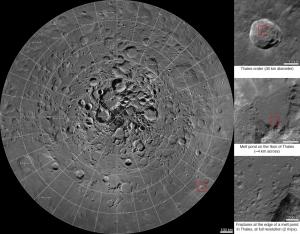Science
A mathematical equation that explains the behavior of nanofoams

- Read more
- 336 reads
Space Sunflower May Help Snap Pictures of Planets

This animation shows the prototype starshade, a giant structure designed to block the glare of stars so that future space telescopes can take pictures of planets.
- Read more
- 348 reads
Amazon Inhales More Carbon than It Emits, NASA Finds

Old-growth Amazon tree canopy in Tapajós National Forest, Brazil. A new NASA study shows that the living trees in the undisturbed Amazon forest draw more carbon dioxide from the air than the forest's dead trees emit.
- Read more
- 336 reads
NASA Releases First Interactive Mosaic of Lunar North Pole

A new interactive mosaic from NASA's Lunar Reconnaissance Orbiter covers the north pole of the moon from 60 to 90 degrees north latitude at a resolution of 6-1/2 feet (2 meters) per pixel. Close-ups of Thales crater (right side) zoom in to reveal increasing levels of detail.
- Read more
- 335 reads
NASA Orbiter Finds New Gully Channel on Mars

This pair of before (left) and after (right) images from the High Resolution Imaging Science Experiment (HiRISE) camera on NASA's Mars Reconnaissance Orbiter documents formation of a new channel on a Martian slope between 2010 and 2013, likely resulting from activity of carbon-dioxide frost.
- Read more
- 359 reads
NASA Historic Earth Images Still Hold Research Value

This Seasat synthetic aperture radar image from Aug. 27, 1978, shows the Massachusetts coast from Nantucket Island in the south past Cape Cod and Boston to Cape Ann in the north.
- Read more
- 387 reads
Bright Future for Protein Nanoprobes: Berkeley Lab Researchers Discover New Rules for Single-Particle Imaging with Light-Emitting Nanocrystals

Researchers at Berkeley Lab’s Molecular Foundry created upconverting nanoparticles (UCNPs) from nanocrystals of sodium yttrium fluoride (NaYF4) doped with ytterbium and erbium that can be safely used to image single proteins in a cell without disrupting the protein’s activity.
- Read more
- 307 reads
Antimony nanocrystals for batteries

TEM image (false coloured) of monodisperse antimony nanocrystals.
- Read more
- 438 reads
Fabrics Resistant to Growth of Microbes Produced in Iran

- Read more
- 312 reads
Human Rights
Fostering a More Humane World: The 28th Eurasian Economic Summi

Conscience, Hope, and Action: Keys to Global Peace and Sustainability

Ringing FOWPAL’s Peace Bell for the World:Nobel Peace Prize Laureates’ Visions and Actions

Protecting the World’s Cultural Diversity for a Sustainable Future

Puppet Show I International Friendship Day 2020


